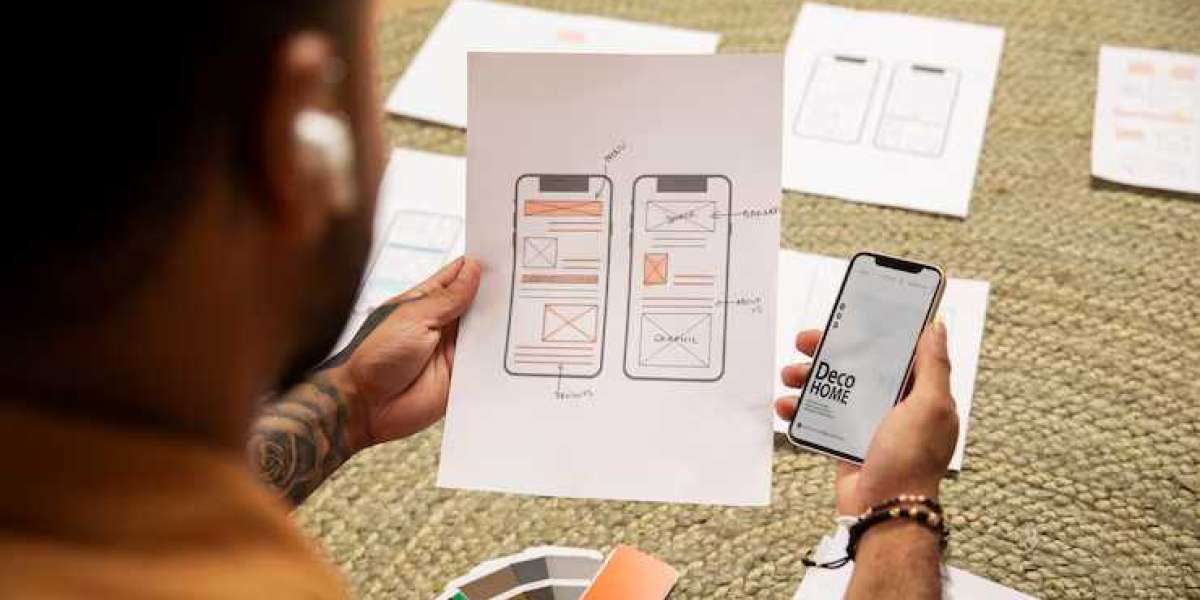Launching a successful mobile app doesn’t start with a full-blown product—it starts with a Minimum Viable Product (MVP). For startups navigating tight budgets, rapid development timelines, and uncertain markets, building an MVP is a smart, strategic step toward app success.
In this comprehensive guide, we’ll walk you through the process of creating an MVP for your mobile app. Whether you're exploring mobile application development services, looking to launch on Android, iOS, or both, or wondering how to make money from mobile apps, we’ve got you covered.
What Is an MVP?
An MVP (Minimum Viable Product) is a stripped-down version of your app that includes only the core features needed to test the idea with early adopters. The goal of an MVP is not perfection—it’s validation. It's about getting your concept in front of real users as quickly as possible, learning from their feedback, and refining your product accordingly.
Why Startups Should Start with an MVP
Startups often work with limited resources. An MVP enables:
Faster time to market
Reduced development costs
User-driven development
Early feedback and validation
Improved investor confidence
Developing a complete app without testing the market is risky. An MVP mitigates that risk by helping you avoid investing heavily in features that users may not even want.
Step-by-Step Guide to Creating an MVP for Your Mobile App
1. Define the Problem Your App Solves
Every great app begins with a problem that needs solving. For example, apps like Omegle solved the problem of anonymous chatting with strangers across the world. Before you build anything, clearly define the core problem your app addresses and for whom.
Ask:
What problem are we solving?
Who are our users?
How are they solving this problem currently?
This foundational clarity will shape every MVP decision moving forward.
2. Identify Core Features
Now that you’ve defined the problem, identify only the essential features your app needs to function. If you're exploring how to make a social media app, don't start by building messaging, stories, filters, and live streaming all at once. Instead, ask: what's the one feature that defines your social platform?
Example MVP Features:
A social media app MVP might include user registration, a profile page, and a simple feed.
For apps like Omegle, the MVP might include anonymous video chat, a matching algorithm, and a report button.
By focusing on essentials, you reduce cost and development time.
3. Choose the Right Platform: Android or iOS?
You don’t always need to launch on both Android and iOS from the get-go. Evaluate your target market to decide the best initial platform.
Android App Development Services are often preferred for reaching a broader global audience, especially in Asia, Africa, and Latin America.
iOS App Development Services are ideal if your target market is in North America, Europe, or includes high-spending users.
Of course, cross-platform development tools like Flutter or React Native can help you build for both ecosystems faster if your MVP requires it.
4. Find the Right Development Partner
Choosing the right mobile application development services is critical for MVP success. Look for teams with:
Experience building MVPs
Clear project timelines and costs
Expertise in android app development services and iOS app development services
Agile development processes
Good partners will guide you through prioritization, wireframing, UI/UX, development, testing, and launch.
5. Design User-Centric UI/UX
Your MVP may be feature-light, but it should still be intuitive and enjoyable to use. Invest time in user-centric design.
Key tips:
Keep navigation simple and clean
Use onboarding tutorials if needed
Stick to familiar design patterns
Test with real users before launch
This is especially important for social platforms and apps like Omegle, where user experience can make or break engagement.
6. Build, Test, and Iterate Quickly
With the MVP planned and designed, your development team should work in agile sprints—short, iterative cycles that allow you to build, test, and tweak continuously.
Testing tips:
Conduct alpha testing in-house
Use beta testers from your target audience
Track behavior using analytics tools
Gather direct user feedback through surveys and in-app prompts
Don't be afraid to pivot. An MVP’s purpose is to learn.
Examples of Successful MVPs
Many famous apps started as MVPs:
Facebook: Began as a Harvard-only student directory.
Instagram: Initially only allowed photo sharing with filters.
Dropbox: Started with a demo video rather than a product.
These companies used MVPs to validate demand and iteratively build out their platforms.
How to Make Money From Mobile Apps: Monetizing Your MVP
Monetization is often overlooked in MVP development—but it shouldn't be. If you’re wondering how to make money from mobile apps, here are some options even at the MVP stage:
1. In-App Advertising
Popular for free apps, especially in categories like games, chat, and apps like Omegle.
2. Freemium Model
Offer basic features for free and charge for premium ones.
3. Subscriptions
Recurring revenue through monthly or yearly access—ideal for media, education, or health apps.
4. One-Time Purchases
Charge a one-time fee to download or unlock the app.
5. Affiliate Marketing
Earn commissions by promoting third-party products or services in your app.
Make sure your chosen monetization aligns with your MVP’s purpose and audience behavior.
Building MVPs for Specific App Types
How to Make a Social Media App MVP
If you’re exploring how to make a social media app, an MVP version might include:
User registration/login
Profile creation
Feed for sharing posts
Basic commenting/liking system
Skip features like live video, hashtags, or AR filters until later. Focus on validating whether users enjoy engaging on your platform.
Apps Like Omegle: MVP Approach
For apps like Omegle, consider these MVP features:
Anonymous user matching
Video and/or text chat
Skip/match next user button
Moderation/reporting tools
Ensure that privacy and safety mechanisms are prioritized early—even in MVP form.
Post-MVP: What Comes Next?
Once your MVP is live, the real work begins. Here’s what to do next:
1. Analyze User Data
Use analytics tools like Firebase, Mixpanel, or Amplitude to study:
Retention rates
Feature engagement
User flows and drop-offs
2. Gather Feedback
Talk to real users. Run surveys. Ask:
What do you like/dislike?
What features are missing?
Would you recommend this app?
3. Iterate and Expand
Use insights to plan the next version. Add features, fix usability issues, and refine your monetization strategy.
4. Seek Funding
A well-performing MVP can impress investors and open doors to funding. Have clear metrics ready—downloads, retention, engagement, etc.
Mistakes to Avoid When Building an MVP
Overloading Features
Avoid building too much. Stick to essentials.Ignoring User Feedback
Feedback is your compass. Listen and adapt.Poor UI/UX
Even MVPs need to be usable and attractive.No Monetization Plan
Consider monetization from the start—even if lightly implemented.Targeting Too Broad a Market
Start niche. Refine your audience to solve a specific problem well.
Final Thoughts
Creating an MVP for your mobile app isn’t about building a basic version of your dream app—it’s about building a learning machine. Whether you're exploring how to make a social media app, building apps like Omegle, or looking into how to make money from mobile apps, starting with an MVP is the best strategy for launching with confidence and clarity.
By leveraging expert mobile application development services, and choosing the right approach for android app development services or iOS app development services, startups can reduce risk, control costs, and deliver real value to their users—sooner.
So, what are you waiting for? Your MVP is the first step in turning your mobile app vision into a reality.
Need help building an MVP for your app idea?
Our expert team provides top-tier mobile application development services across both Android and iOS. Whether you're building the next big social app or a niche utility, we can help you plan, build, and scale.



